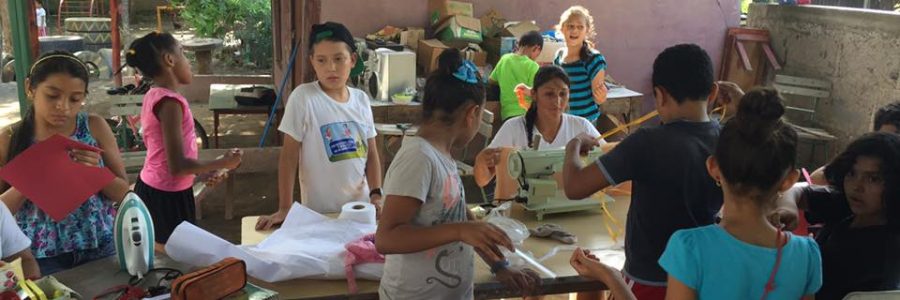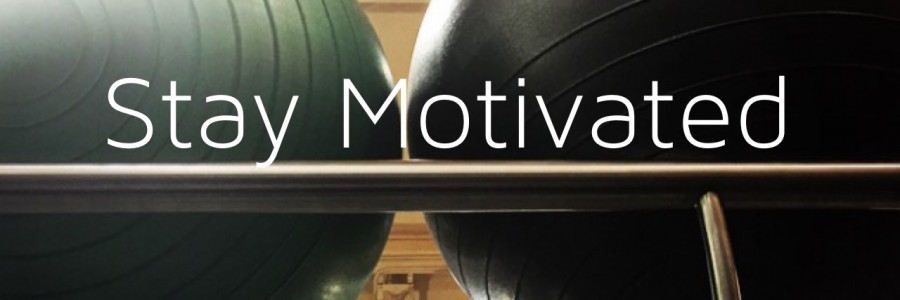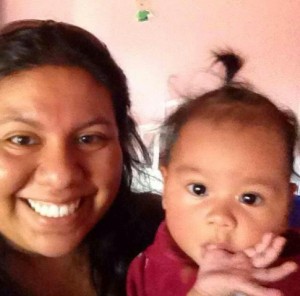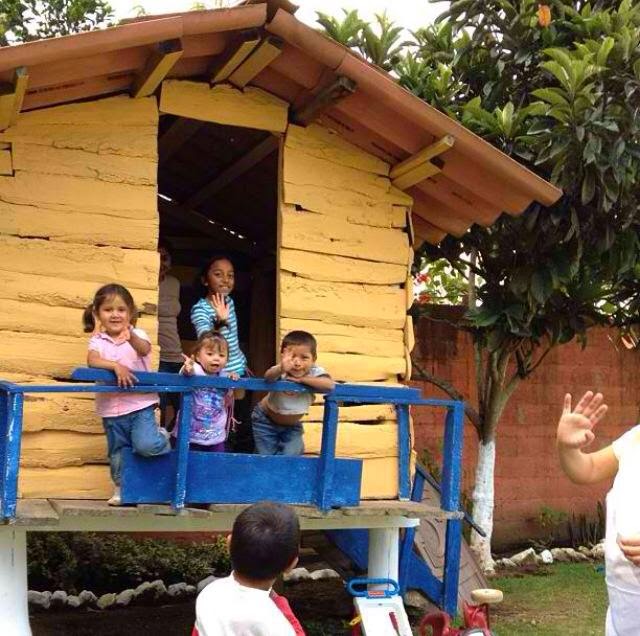During my 37 years, I have faced numerous obstacles. Some as a result of my actions, some unable to avoid. Some more minor than others. Some to personal to share. I believe that God places some obstacles in our paths to build character, build inner strength, teach us lessons, and bring us even closer to him. Challenges are not to be taken lightly. Everyone has them, it’s how you choose to face and overcome them that matters.
A recent challenge for me was facing the fact that I needed a feeding tube and how to avoid the shameful stigma that I believed came with it.
In the latter part of April 2013 I was hospitalized and diagnosed with Gastroparesis. I was discharged from the hospital on a liquid only diet. I had to write down ALL of my input and output, which was actually pretty easy being that not much of anything, even though only liquids, would stay down. I was in a lot of pain from trying to force liquids but getting nowhere. I was lucky if I could handle 1 Gatorade a day, sipping a little at a time. As the week progressed, my ability to drink anything dwindled while my feeling of weakness increased. As instructed, I kept my new Gastroenterologist up to date via emails. By the end of the week he instructed me to return to the hospital and that we were probably going to have to discuss a feeding tube.
A feeding tube! What was that? What did that mean? I had never heard about people like me having a feeding tube. Weren’t people with feeding tubes old and/or dying? How would they place it? How long would I need it? What would it be like? All these questions were so overwhelming!
After picking up my kids from school, I gave them a huge hug and kiss before heading back for UNC. After my admittance, my nerves were all over the place. However, realizing that I was literally receiving NO fluids or nutrition via oral means, I had to do something. It was no secret that I could not survive or live like this.
I was terrified! Luckily, I was blessed to have my same hospitalist from my previous hospitalization. He was amazing at calming my fears and preparing mentally for the surgery. Unfortunately, I was only under his care for the first few days of my readmission. Thankfully, he was able to make all of the arrangements prior to being switched to a different doctor. My GI helped ease my fears as well. Even though he was not on rotation, he made a point to come visit me and explain to me in person why he believed I needed a feeding tube and answer any questions that I had.
Surgery day came very quickly. Mentally, I believed I was as prepared as I could possibly be. I trusted my GI and my initial hospitalist and agreed that a GJ feeding tube was my best option. If my stomach wasn’t going to cooperate, then I could just skip it and feed straight into my small intestines, decreasing the pain and nausea. I have to admit, the option was sounding pretty good.
After waking from surgery, I was in a lot of pain. Much more pain than expected. I knew the pain would eventually pass but hopeful that my nutrition would increase to the point I could be active again. Unfortunately, I felt like a freak when I saw the long tube hanging from my abdomen. How had my life come to this point? Would I be like this forever? What would my family, especially kids and husband think?
The first few months happened to be summer break, which worked out great for me. To begin with, I tried to keep my tube feedings private. I fed when I was at home and unhooked when I chose to go anywhere in public. When school began back, I started running my feeds only at home and overnight. I did not want my students and colleagues to see this feeding tube. I did not want to appear like a freak, weird, or weak.
This was my challenge; I had to learn to accept a feeding tube. Yes, needing a feeding tube may have been caused by Gastroparesis but learning to live with it was all me. I had to face the challenge head on and overcome the fear of social stigma. I had to become courageous and not be ashamed. True, I had a feeding tube and some would look at me differently, but why should that matter? If I wanted to be an active mother and teacher, I had to face my fears. And that I did.
I began wearing my tube feedings (in backpack) all day. To begin with I was self conscious, but eventually I became more comfortable. Instead of looking at my backpack as a curse, I looked at it as a way to advocate and educate my students. I shared the reason for the pump, educated how my digestive tract was impaired, and how the feedings helped me function. I even bought a more comfortable and stylish backpack. Even though I was under the recommended caloric intake (about 1/2 of what the goal set was) I was active.
I wish I could say that I have overcome all of the challenges set forth by the debilitating disease, Gastroparesis. Unfortunately, I am still fighting battles and challenges from Gastroparesis daily! The pain, the nausea, inability to eat, bloating, fatigue, etc continue every single day. The tube changes every 3 months, unless unexpected problems/issues arise. Most recently fighting these challenges have become more difficult. BUT, I did overcome the challenge of accepting my feeding tube and using the experience to educate others; And I must admit that was definitely an extremely daunting challenge.
The only advice that I can give to others that either have or are considering feeding tubes is to do what is best for your health. Feeding tubes are not ideal, they are not the “magic pill”, they do not cure diseases, but they are a means to much needed nutrition. I would love for other tubies to know that they are not alone and there is absolutely nothing to be ashamed of. There are many online support groups available; some disease specific and others just for tubies in general. I strongly recommend other tubies reach out and find a support group that is right for them. Support groups offer you a chance to ask for advice, share personal stories, vent, share advice from own experiences, and even form friendships.
I am pleased that I overcame the Tubie Challenge. Now if I could just tackle the Gastroparesis Challenge!
Visit our advocacy community page:
Gastroparesis: Fighting for Change
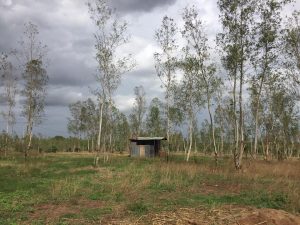 There is a land not far from where we live; I’d say about 4-5 countries far away (depending if you count side to side)… too far to walk to yet many do so every day, where several communities seek to learn new ways to be sustained. Where women and men are rich in land and are learning to cultivate the dirt with no water, no shovels, and for many no plan. The other part of the land is green fruit filled, where bees are kept, they make honey that helps their communities grow.
There is a land not far from where we live; I’d say about 4-5 countries far away (depending if you count side to side)… too far to walk to yet many do so every day, where several communities seek to learn new ways to be sustained. Where women and men are rich in land and are learning to cultivate the dirt with no water, no shovels, and for many no plan. The other part of the land is green fruit filled, where bees are kept, they make honey that helps their communities grow.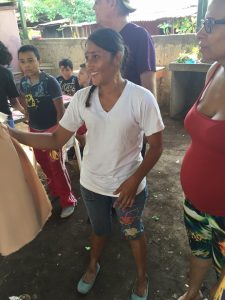 I met a woman, she could not speak, she has two children, and she is learning how to make dresses so she can sell her works and feed her children, pay for her children’s schooling needs. A typical story you hear in the “third world scenes.” What you don’t know is that she lives in iron wooden stick hot open shelter home with little to no water. You only get one hour to pour and fill your buckets for every few days. The water wells, ponds and lakes have dried up, there use to be water all around them. Now, there is no walking 5-15 miles to get a gallon of water (it takes me 1 hour alone to walk 3.5-4 miles alone, imagine that). There is no water to cultivate their lands. A few years ago they where finally given the deeds to their lands. These communities created in old cane fields were given to them as payment for their hard work as a company they worked for broke during the Nicaraguan wars. This once was a land of the biggest company that grew sweet cane in Central America they once had sweet lands.
I met a woman, she could not speak, she has two children, and she is learning how to make dresses so she can sell her works and feed her children, pay for her children’s schooling needs. A typical story you hear in the “third world scenes.” What you don’t know is that she lives in iron wooden stick hot open shelter home with little to no water. You only get one hour to pour and fill your buckets for every few days. The water wells, ponds and lakes have dried up, there use to be water all around them. Now, there is no walking 5-15 miles to get a gallon of water (it takes me 1 hour alone to walk 3.5-4 miles alone, imagine that). There is no water to cultivate their lands. A few years ago they where finally given the deeds to their lands. These communities created in old cane fields were given to them as payment for their hard work as a company they worked for broke during the Nicaraguan wars. This once was a land of the biggest company that grew sweet cane in Central America they once had sweet lands.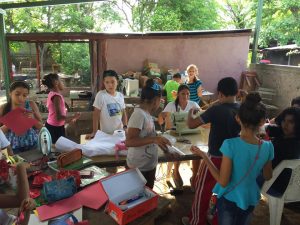 entrepreneurs I will tell you about in my next few posts. All I can tell you now is to buy their honey, to help them mend their lives and lands.
entrepreneurs I will tell you about in my next few posts. All I can tell you now is to buy their honey, to help them mend their lives and lands.
